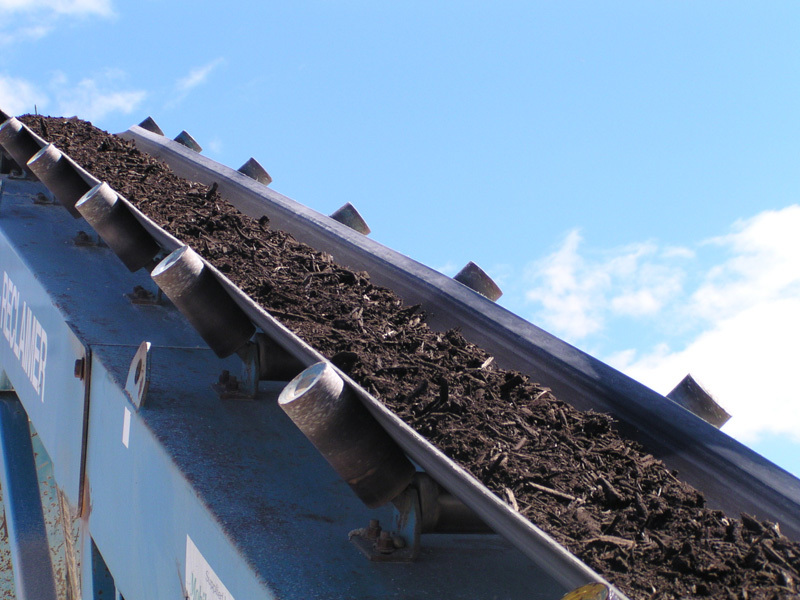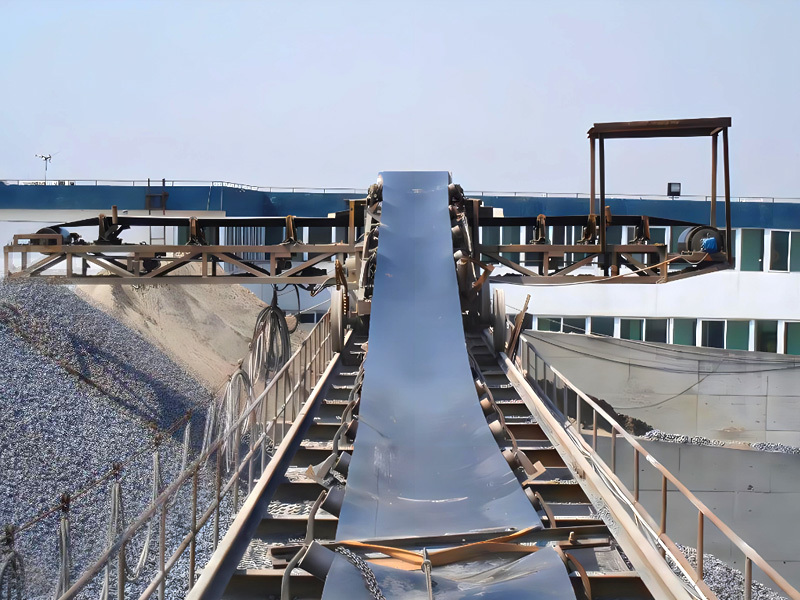Baoding Fangnuo Rubber Products Manufacturing Co., Ltd.
-
-
Fabric core conveyor belt series
-
High wear-resistant energy-saving conveyor belt
-
(EP) Polyester conveyor belt
-
Nylon conveyor belt
-
Chevron conveyor belt
-
Ring conveyor belt
-
Super wear-resistant conveyor belt
-
Food and agriculture non-slip conveyor belt
-
Impact-resistant and tear-resistant steel mesh conveyor belt
-
Cut edge conveyor belt
-
Extra-wide conveyor belt
View More -
-
-
Special conveyor belt series
-
Steel cord conveyor belt
-
Vacuum filter conveyor belt
-
High-angle bucket elevator belt
-
Corrugated sidewall conveyor belt
-
Rubber sheet/rubber block/rubber pad
-
Aramid conveyor belt
-
SW conveyor belt (warp)
-
Backless/backless conveyor belt
-
Food-grade white conveyor belt
View More -
-
-
Grain Conveyor Upgrades: When and Why to Consider Them for Optimal Efficiency
Release time:
2025-11-16 11:00
Grain Conveyor Upgrades: When and Why to Consider Them for Optimal Efficiency
Understanding Grain Conveyors and Their Role in Agriculture
Grain conveyors play a vital role in the agricultural supply chain, facilitating the movement of grain from one point to another with efficiency and precision. These systems are designed to transport bulk grains like wheat, corn, and barley from storage or processing facilities to trucks or railcars. As the agricultural industry evolves, the need for efficient and reliable grain handling systems has never been more critical.
The Importance of Efficiency in Grain Handling
In today's competitive agricultural market, efficiency translates to profitability. Upgrading grain conveyors can lead to faster processing times, reduced labor costs, and improved grain quality. A well-optimized conveyor system minimizes downtime and maximizes throughput, ensuring that farmers and grain handlers can meet the growing demands of consumers and markets.
Signs Your Grain Conveyor Needs an Upgrade
Recognizing when it's time to upgrade your grain conveyor is essential for maintaining operational efficiency. Here are some key indicators:
1. Decreased Performance and Throughput
If your grain conveyor has seen a decline in performance, it might struggle to handle the same volume of grain as before. This decrease can lead to bottlenecks in your operation, which can be costly.
2. Frequent Breakdowns and Maintenance Issues
Frequent mechanical failures can indicate that your system is outdated. The costs associated with constant repairs can quickly add up, making an upgrade a more economical choice in the long run.
3. Safety Concerns
Older conveyor systems may not meet current safety standards, putting your workers at risk. Ensuring safety through modern equipment should always be a priority.
4. Incompatibility with Modern Technologies
As technology advances, your grain handling operations may benefit from new features such as automation and real-time monitoring. If your current conveyor cannot integrate with these technologies, it may be time for an upgrade.
Benefits of Upgrading Your Grain Conveyor System
Consider the following advantages of upgrading your grain conveyor system:
1. Enhanced Efficiency and Productivity
Modern conveyor systems are designed for optimal efficiency, allowing for faster grain handling and improved overall productivity. This translates to a significant return on investment (ROI) over time.
2. Improved Grain Quality
Newer conveyor designs often include features that reduce grain damage during transport, which is crucial for maintaining quality and market value.
3. Energy Efficiency
Older conveyor systems may consume more energy than necessary. Upgrading to energy-efficient models can reduce operational costs and carbon footprints, aligning with sustainability goals.
4. Increased Safety Features
Modern conveyors come equipped with advanced safety features, including emergency shut-off systems, protective guards, and monitoring systems designed to keep workers safe.
When to Upgrade Your Grain Conveyor
Timing your upgrade can be just as important as the decision itself. Here are a few scenarios to consider:
1. At the End of the Harvest Season
Many farmers choose to upgrade their systems post-harvest when operations slow down, providing an opportunity for installation without disrupting ongoing activities.
2. Before Major Production Increases
If you anticipate a significant increase in grain production, upgrading before this surge can help you manage the additional volume effectively.
3. During Routine Maintenance Checks
Utilizing routine maintenance checks as a trigger to assess your conveyor's condition can lead to proactive upgrades, preventing future issues.
Key Considerations for a Successful Grain Conveyor Upgrade
When planning your upgrade, consider the following factors:
1. Assessing Your Current System
Conduct a thorough evaluation of your existing conveyor system. Identify its limitations and what features you need in a new model to improve performance.
2. Budgeting for the Upgrade
Establish a clear budget, including costs for equipment, installation, and potential downtime. Ensure that the upgrade aligns with your financial goals.
3. Choosing the Right Equipment
Select a conveyor system that meets your specific needs, taking into account factors such as grain type, volume requirements, and operational space.
4. Partnering with Reliable Suppliers
Work with reputable suppliers who can provide expert advice and support throughout the upgrade process. Their expertise can help you make informed decisions.
Types of Grain Conveyor Upgrades to Consider
Upgrading your grain conveyor might involve various enhancements. Here are some options to explore:
1. Belt Conveyors
Belt conveyors offer flexibility and the ability to handle different grain types. Upgrading to a modern belt system can improve grain handling efficiency and reduce damage.
2. Chain Conveyors
Chain conveyors are known for their durability and strength. An upgrade may involve transitioning to a more efficient chain system, designed to handle heavier loads.
3. Pneumatic Conveyors
Pneumatic systems use air pressure to transport grains, making them ideal for delicate products. Upgrading to a pneumatic system can enhance grain quality and minimize breakage.
4. Automated Systems
Automation is the future of grain handling. Implementing automated conveyor systems can streamline operations and reduce the need for manual labor.
Cost-Benefit Analysis of Grain Conveyor Upgrades
Conducting a cost-benefit analysis is essential when considering an upgrade. Assess the initial costs against the long-term savings and efficiency gains. Factors to evaluate include:
1. Initial Investment vs. Long-Term Savings
While the upfront cost might be substantial, consider the long-term savings in maintenance, labor, and energy costs.
2. Increased Output and Efficiency
Evaluate how much additional grain you can handle with upgraded equipment. Increased efficiency can lead to higher profits.
3. Safety and Liability Costs
Investing in safety features can minimize the risk of accidents, which can be financially devastating. An upgrade may significantly reduce liability costs.
Frequently Asked Questions (FAQs)
1. How often should I consider upgrading my grain conveyor system?
Regular evaluations should be conducted, ideally every few years or whenever you notice performance issues.
2. What are some signs that my grain conveyor is outdated?
Frequent breakages, decreased performance, and safety concerns are key indicators.
3. Can I upgrade my existing conveyor, or do I need a completely new system?
It often depends on the condition of your existing system. In some cases, partial upgrades may be feasible.
4. How long does the upgrade process typically take?
The timeline varies but expect a few days to weeks, depending on the complexity of the upgrade.
5. What features should I look for in a modern grain conveyor?
Look for energy efficiency, safety features, ease of maintenance, and compatibility with automation technologies.
Conclusion
Upgrading your grain conveyor system is a strategic move that can greatly enhance the efficiency and safety of your operations. By recognizing the signs that indicate a need for change, understanding the various benefits, and considering the timing and specifics of the upgrade, you can make informed decisions that bolster your agricultural processes. Investing in modern technology not only improves productivity but also positions your operation for future growth and success. Embrace the opportunity to optimize your grain handling systems for the demands of a rapidly evolving agricultural landscape.
grain conveyor
Previous:
Previous:
Product
About Us
We specialize in producing heavy-duty EP nylon conveyor belts, steel cord conveyor belts, corrugated rib conveyor belts, bucket elevator conveyor belts, herringbone conveyor belts, ring conveyor belts, etc. As a Chinese conveyor belt manufacturer, supplier and exporter, we focus on providing customers with high-quality conveyor belts and better services.
Baoding Fangnuo Rubber Products Manufacturing Co., Ltd.
Copyright Baoding Fangnuo Rubber Products Manufacturing Co., Ltd., All rights reserved















